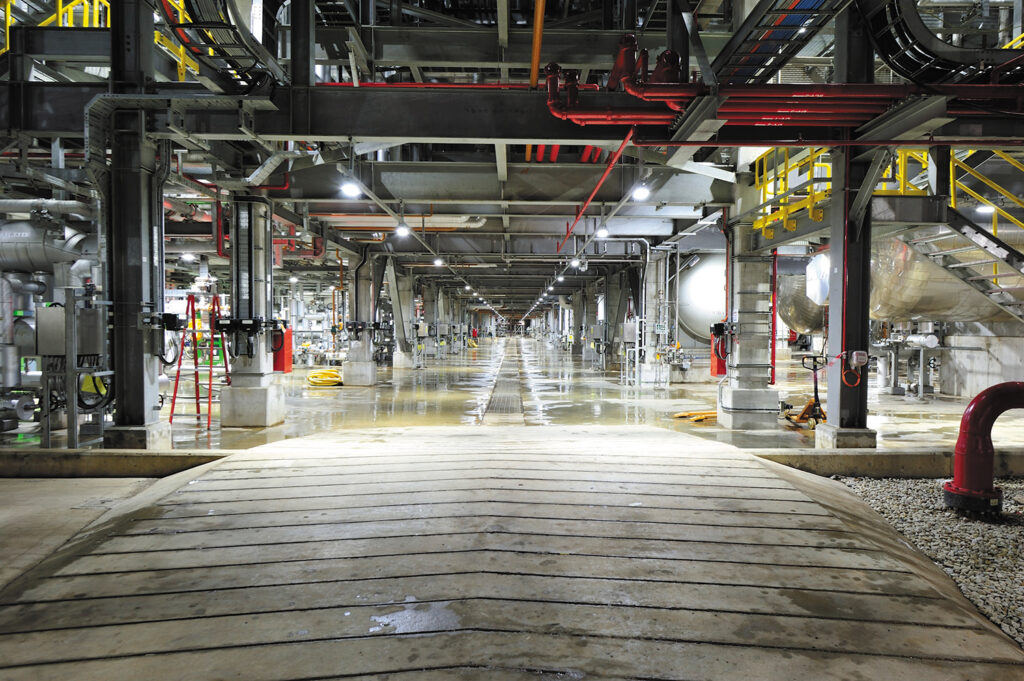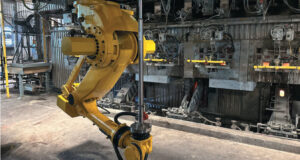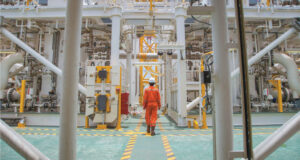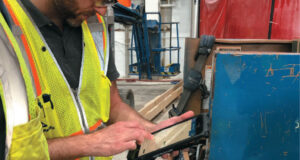LUIS RAMIREZ
Safety is a top priority in all stages of the pulp and paper value chain, from the sawmill through finishing, and even to the storage and distribution of raw and finished products. In the last decade, more than 346,000 injuries and over 400 fatalities have occurred in pulp and paper facilities in the US alone, costing companies more than US$12.6 billion1, not to mention the tremendous cost to victims and their families. While the industry has made great strides in reducing hazards, until the industry reaches zero lost time incidents, there is always more that can be done to improve the safety of operations.

Poor facility lighting is an often-underestimated risk factor in many accidents and injuries. Too often, companies simply deal with inadequate lighting as a normal part of everyday operation, but poor lighting puts workers at risk. Investing in safe, modern lighting is a smart strategy for improving the safety and well-being of workers and protecting the company from financial risks of injuries and fatalities.
LED LIGHTING
High-efficiency industrial LED lighting is proving to be the safest lighting solution available for improving pulp and paper workplace safety. In addition to its energy-saving efficiency and very low heat output, industrial LED technology outperforms conventional lighting in five key areas:
1. Resistance to dust and combustible particulates. Airborne particulates are a fact of life in pulp and paper production, but they can also be extremely problematic—and even dangerous. Conventional HID fixtures run very hot, and as dust and debris build up on them, it creates a dangerous fire hazard. The accumulation of material can also cause the fixtures to overheat, resulting in premature failure of the bulb and/or fixture. Not to mention, in hazardous location classified areas, the potential for combustible particulates to infiltrate the fixture during maintenance adds to the risk of fire or explosion. Industrial LED fixtures have two advantages in this situation: first, they produce far less ambient heat, which makes overheating or fire as a result of dust and debris buildup a non-issue. Second, if an LED fixture does fail (which happens rarely; more on that later), it most often requires a complete changeout of the fixture, which dramatically lessens the risk of fire or explosion from particulate infiltration.
2. Improved visibility. Inadequate lighting makes it extremely difficult for workers to detect hazards on the production floor, exposing them to slips, trips, and falls—some of the most common industrial workplace injuries. Conventional lighting like HPS creates a dark, dingy appearance, thanks to its poor color rendering; this also makes it hard to distinguish warning placards, electrical wiring, and color-coded signage. Industrial LED lighting, on the other hand, provides bright, white, near-daylight caliber lighting, which dramatically improves visibility. By brightening the shop floor and improving the color rendering, employees can more easily detect—and avoid—potential hazards.
3. Enhanced worker alertness. The dark, dull color of conventional HPS fixtures can have a negative impact on the mood and energy level2 of individuals on the production floor. This is especially risky in facilities that operate 24/7 with third shift workers who are sometimes unable to get adequate rest during off hours. Fatigue and drowsiness are key contributors to accidents—workers are simply too tired to pay full attention or react quickly to hazards. The crisp white light of LED fixtures has proven to increase alertness and reduce fatigue by five times compared to HPS by suppressing levels of melatonin3 (the sleep hormone). Studies have even shown that LED light can improve workers’ cognitive speed and performance.
4. Lower maintenance. Conventional lighting requires near-constant maintenance; bulb and fixture changes are a costly and risky routine in most facilities. Workers must utilize scissor or boom lifts and ladders and often overtop production equipment, which puts them at frequent risk for falls, along with electrical injuries. By contrast, some of the most advanced LED fixtures are guaranteed to last 10 years or more, essentially putting an end to risky lighting maintenance. This can make a huge impact on improving the safety of those responsible for lighting maintenance and making sure the facility has fully functional lighting at all times, for the safety of everyone in the facility.
5. Reduced hazmat exposure. A single HPS fixture contains enough mercury to poison an entire roomful of people. And with so many of these bulbs being replaced, handled and stored, breakage is extremely common, exposing everyone in the vicinity to poisonous mercury. Industrial LED fixtures eliminate this risk and contain zero hazardous materials, which makes them safer for handling. Also, no special disposal procedures are required.
Upgrading to modern industrial LED lighting is a practical, effective, and economical way to improve workplace safety in pulp and paper facilities. In addition to improving visibility, LED fixtures provide superior resistance to combustible and caustic materials and drastically lower maintenance and hazmat exposure risks, making them a much safer alternative to conventional fixtures.
Luis Ramirez is chief operating officer at Dialight. Learn more at dialight.com.
References:
1 U.S. Bureau of Labor Statistics, National Safety Council, ECG Analysis.
2 Edwards, NREL, “A Literature Review of the Effects of Natural Light on Building Occupants.”
3 Falchi, “Limiting the impact of light pollution on human health, environment and stellar visibility.”
 Paper 360
Paper 360


